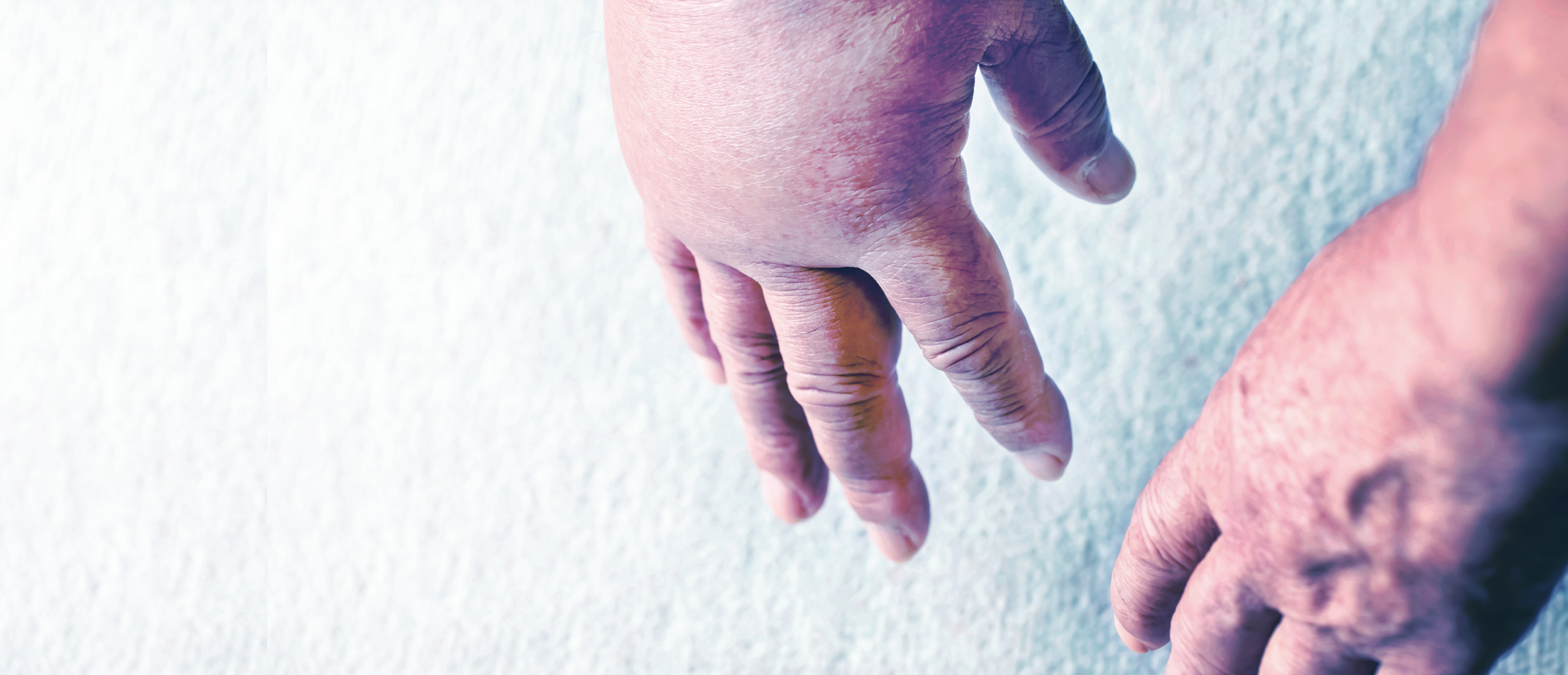Hereditary angioedema (HAE) is a rare genetic disorder. It's thought that only 1 in 50,000 people in the entire world have HAE.
Signs and symptoms of Hereditary Angioedema
HAE can cause painful and sudden swelling in any part of the body. These HAE “attacks” can happen without warning and last for days. The pain and swelling of an attack can also be disabling, making it difficult to perform everyday tasks. This can make living with HAE physically and emotionally challenging.
Attacks can occur in any part of the body, but common swell locations include:
- Abdomen
- Face
- Throat
- Genitals
- Hands
- Feet
Swelling in the throat can become life threatening because it can lead to suffocation. If you have an attack affecting the throat, you should seek emergency care right away.
HAE can be unpredictable

HAE can be unpredictable
HAE symptoms can look very different from person to person—and even within the same person. For instance, someone with HAE may get attacks more often during puberty. Or someone who usually experiences abdominal swelling may still have an attack in the throat or elsewhere.
An HAE attack can start in one location and spread to another.
HAE attacks may last for days if not treated. The swelling usually gets worse over a 24-hour period and then slowly goes away during the next 48-72 hours.
Some people experience a tingling sensation before an attack. They may also notice a nonraised, non-itchy rash before the swelling begins.
What causes Hereditary Angioedema?
People with HAE Type 1 and 2 have low functioning C1 esterase inhibitors (C1-INH), and their plasma levels are low (HAE Type 1) or normal/elevated (HAE Type 2).
When there isn't enough working C1-INH, another protein called plasma kallikrein becomes overactive. Too much plasma kallikrein activity leads to an overproduction of bradykinin - the substance that leads to an attack.
It is also possible for people to have clinical symptoms that are indistinguishable from Types 1 and 2 and have normal plasma levels and functioning C1-INH. This is known as HAE with normal levels of C1-INH (HAE nC1-INH), previously referred to as HAE Type 3.
What causes HAE attacks?
HAE attacks are sometimes set off by a trigger. HAE can vary a lot from person to person, so your triggers might be very different from someone else’s. For example, some people might only experience an HAE attack because they've gone through a physical trauma, like falling off a bicycle or having a dental procedure. For others, something as simple as making a repetitive motion, like using scissors, could cause an HAE attack.
Some common HAE attack triggers are:






